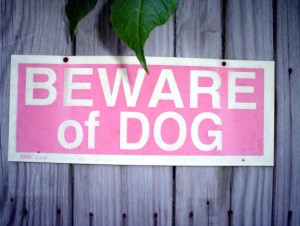Pooches pot and privacy . . .
 In the midst of a poor economy and high unemployment, our Supreme Court Justices have turned their attention to, yes, sniff dogs.
In the midst of a poor economy and high unemployment, our Supreme Court Justices have turned their attention to, yes, sniff dogs.
US Supreme Court will decide if the use of dogs to sniff out indoor grow houses is legal or an invasion of privacy.
The issue they are pondering can be summarized as follows: can a police dog be allowed to sniff outside a home for illegal drugs that are inside the home? Or, does a person have a right to privacy?
The justices have signaled that the privacy rights of an individual are too great to allow police a broad license to let police dogs sniff around a home for evidence that is not visible. Additionally, the justices discussed setting a bar for police officers, a test of their dogs so to speak, that proves the dogs are “reliable” and not just “sniffers” meaning that the justices want to bar the police from the potential of using known “unreliable sniffers” (police dogs not sufficiently trained) just to harass people and search them un-necessarily.
While in session, the justices focused on two cases: one questioned the location of the search and whether the doorstep of the home was too invasive; the second case questioned the talents of the “sniffer” and whether the dog was actually “qualified” to perform drug sniffs and searches.
This begs the question, how do police know when a dog is considered a “reliable” sniffer?
In regard to privacy, as quoted in a Reuters article, Justice Scalia is quoted as saying: “it would be okay to let police use binoculars to look inside a home from afar if the blinds were left open, but not to walk right up if they saw nothing . . .Why isn’t it the same thing with the dog?” Scalia asked. “It seems to me crucial that the police officer went up to the portion of the house as to which there is privacy.”
Justice Stephen Breyer, however, is quoted as having said “many homeowners would resent having a dog walk up and down near their homes . . . You’re looking at the expectation of a reasonable homeowner”.
Justice Elena Kagan, as quoted in Rueters, asked if police could use a “Smell-o-Matic” that found the same things a dog might find.”
Finally, Justice Samuel Alito stated that a “sniff was a search because it revealed details that a homeowner wanted to keep private.” and Blumberg called the “sniff a trespass”.
To add to the splitting of hairs, Chief Justice John Roberts brings up the thought, as quoted in Rueters, “if it mattered that mothballs, which mask odours, were found outside the . . . home.” To make it more confusing, he further questions: “Are we talking about an expectation of privacy in the marijuana or an expectation of privacy in the odor?”
The Justices further questioned the adequate training of sniff dogs, but could not define a “magic number” that would demonstrate that a dog’s nose was “reliable”. In the second case, the court pondered whether there was enough evidence, beyond training and certification, to determine if the dog was good enough to perform free air sniffs. It is undetermined at this point, as to how one would determine a dog’s reliability and what the number would be of correct alerts necessary to certify a dog as a qualified “sniffer”.
Police “like to search where they’re likely to find something, and that only exists when the dog is well-trained,” Scalia said. “They have every incentive to train the dog well.”
Decisions are expected by the end of June.
The cases are Florida v. Jardines, U.S. Supreme Court, No. 11-564; and Florida v. Harris, U.S. Supreme Court, No. 11-817.
Connect